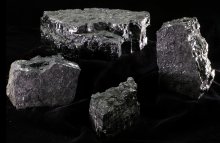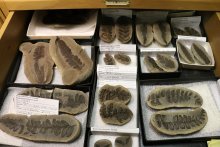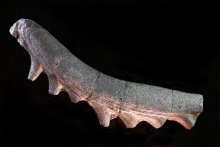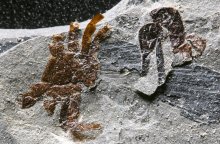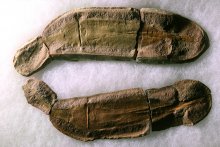Underwater Illinois (500 million to 320 million years ago)
The first significant record of Illinois’ past is found in rocks that formed 500 million years ago. These are some of the oldest rocks that were exposed on the surface. The Earth was then about 4 billion years old, and Illinois was south of the equator. There was land in North America, even mountain ranges. However, Illinois was part of a low-lying basin covered by a shallow, tropical sea.
Coal has been mined in Illinois since before statehood. French explorers documented coal seams being exploited near Ottawa 350 years ago. The first record of coal being mined (or dug) by settlers in Illinois was in 1810. The formation of coal dates back much further, up to 350 million years ago during the Pennsylvanian Period. The state owes its vast coal reserves to now-extinct trees, ferns, and other plants that lived, died, and piled up in the coastal lowlands of the shallow seas that once covered much of the state. Dying plant matter accumulated and was preserved in water. Those deposits were later buried by sediment and eventually transformed by extreme heat and pressure into lignite and finally coal.
Call them Pyrite Suns, Pyrite Dollars, Miner’s Dollars, or even Sun Dollars; just don’t call them fossils. They may look like fossilized plants, but the crystal structures actually formed deep underground under great pressure about 350 million years ago. These round disks sometimes occur between seams of coal and may be found when coal is mined. Although pyrite is quite common worldwide, the disk form is virtually unique to Illinois.
This unique assemblage of fossil flora and fauna gets its name from the Mazon (pronounced Muh-zon) Creek (River) that serves as a tributary to the Illinois River in northeast Illinois. A portion of the fossil beds are now within the Braidwood State Fish and Wildlife Area, and fossil collecting is allowed by permit. Not only do the fossils help scientists reconstruct past climates and species composition in Illinois (at that time the state was located much closer to the equator), but they are also starkly beautiful.
If you think 200 years of statehood is a significant milestone, consider this: trilobites, in one form or another, lived in the seas that once covered Illinois for a span of almost 300 million years. The oldest specimens date to about 500 million years ago, while the last trilobites died out about 200 million years ago. This specimen dates back to the Silurian Period (408-438 million years ago) and was found near Grafton, Illinois.
Ancient shark relatives from the Pennsylvanian Period evolved some puzzling jaw structures that sometimes curved outward, giving the appearance of two saw blades curving away from each other. That’s why scientists describe them as “tooth whorls.”
Most fossil plants and animals from hundreds of millions of years ago were preserved in swampy lowland areas where they had the good fortune to die and be buried quickly by sediments in water. The water preserved the specimens long enough for the living tissues to be replaced by minerals or for the specimen to create an impression in the soft mud that hardened into shale or sandstone under heat and pressure.






